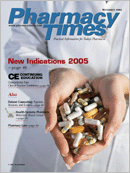Publication
Article
Pharmacy Times
Leeches Approved as Medical Devices
Author(s):
The FDA has approved medicinal leeches for commercial marketing, not as drugs, but as medical devices. According to an FDA Talk Paper, the agency announced that leeches meet the definition of a device because they are considered to be articles intended to diagnose, cure, treat, prevent, or mitigate a disease or condition, or to affect a function or structure of the body, that do not achieve their primary effect through a chemical action and are not metabolized.1 Leeches' primary mode of action is the eating of blood, which is a mechanical process (Table).
Several months before approving the use of leeches, the FDA had approved the use of medical maggots for debriding nonhealing skin and soft tissue wounds, including pressure ulcers, venous stasis ulcers, neuropathic foot ulcers, and traumatic or postsurgical wounds. Maggots and leeches are the first living creatures to be approved by the FDA as medical devices.
History
Although newly recognized by the FDA, the medicinal leech has been used therapeutically for thousands of years. In the late 1800s, leeching became so popular that the common, preferred variety became an endangered species. The great advantage of leeches was that they could extract blood with very little pain and could be used on almost any part of the body. By the early part of the 20th century, however, the use of leeches in medical treatment went into steep decline.
The Medicinal Leech
In the late 20th century, there was a renewed interest in leeches in both the lay and the scientific communities. In 1960, two Yugoslavian surgeons described their use of leeches to relieve venous congestion of skin transplants in the British Journal of Plastic Surgery.4
The medicinal leech (Hirudo medicinalis) has 3 jaws with 100 teeth in each. The specific value of leech therapy is related to the properties of the leech's bite:
- The medicinal leech produces hirudin, a direct thrombin inhibitor5
- Leeches also produce a vasodilator (hyaluronidase), an enzyme that increases the permeability of leech saliva through human tissue and exhibits antibiotic properties
- In addition, leeches produce an anesthetic4
Hirudin
In 1986, biotechnologists were first able to genetically engineer a recombinant version of hirudin. Because of its small size (65 amino acids), the substance can inhibit clot-bound thrombin and restrict the further formation of thrombus.5 Hirudins are alleged to have better properties than other antithrombotic drugs:
- They are not bound to, or inactivated by, antiheparin proteins such as platelet factor 4
- They have no direct effects on platelets or endothelial cells and thus might avoid the problem of heparin-induced immune thrombocytopenia and associated thrombosis
- They may be used in patients with antithrombin III deficiency6
- Hirudins act independently of antithrombin and other plasma proteins
The interaction of hirudin with thrombin is now understood in great detail and has led to the discovery of other direct thrombin inhibitors such as argatroban and melagatran. The latter is poorly absorbed and has now been chemically modified in the form of ximelagatran, the first new oral anticoagulant since warfarin.7 In contrast to warfarin, ximelagatran does not require monitoring of the degree of anticoagulation.8 Ximelagatran has been tested in large-scale clinical studies, but before it is approved the manufacturer must address concerns about possible liver toxicity.
Mr. Sherman is president of Sherman Consulting Services Inc.
For a list of references, send a stamped, self-addressed envelope to: References Department, Attn. A. Stahl, Pharmacy Times, 241 Forsgate Drive, Jamesburg, NJ 08831; or send an e-mail request to: astahl@ascendmedia.com.







